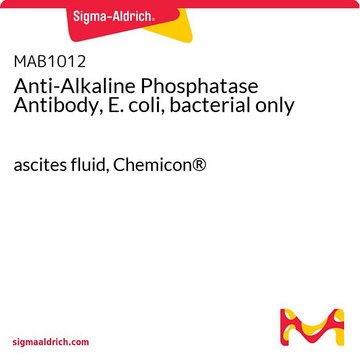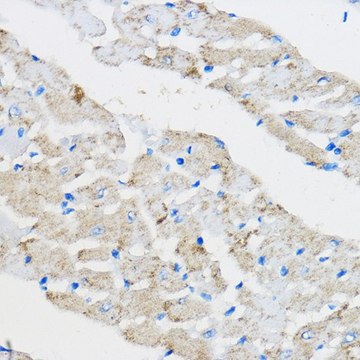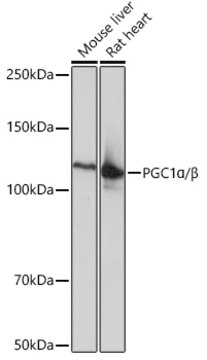MAB3872
Anti-PPAR γ Antibody, isoform 1&2
ascites fluid, clone 1H4, Chemicon®
Synonym(s):
PPAR gamma
Sign Into View Organizational & Contract Pricing
Select a Size
All Photos(1)
Select a Size
Change View
About This Item
UNSPSC Code:
12352203
eCl@ss:
32160702
NACRES:
NA.41
Recommended Products
biological source
mouse
Quality Level
antibody form
ascites fluid
antibody product type
primary antibodies
clone
1H4, monoclonal
species reactivity
human, mouse
manufacturer/tradename
Chemicon®
technique(s)
ELISA: suitable
immunocytochemistry: suitable
western blot: suitable
isotype
IgG1
NCBI accession no.
General description
Peroxisome proliferator-activated receptors (PPARs) are nuclear receptors involved in lipid transport and metabolism. As such, their roles in chronic diseases such as diabetes, obesity, atherosclerosis and cancer are heavily investigated. Transcriptional activity of PPARs is regulated by fatty acid binding. Three PPAR isotypes have been identified: a, b and g. PPARg stimulates lipolysis of circulating triglycerides and the subsequent uptake of fatty acids into adipose cells. PPARs can bind to DNA only as a heterodimer with the retinoid X receptor (RXR).
Specificity
Reacts with human PPAR gamma2. The antibody also reacts with PPAR gamma1 due to immunogen sequence homology. The immunogen shows no homology with PPAR alpha or PPAR beta.
Immunogen
Epitope: isoform 1&2
Synthetic peptide from amino acids 107-121 of human PPAR gamma2.
Application
Anti-PPAR γ Antibody, isoform 1&2 is a Mouse Monoclonal Antibody for detection of PPAR gamma also known as Peroxisome Proliferator Activated Receptor γ & has been validated in ELISA, ICC & WB.
Target description
67 kDa
Analysis Note
Control
THP-1 cell lysate, 3T3-L1 cell lysate or U-937 cell lysate
THP-1 cell lysate, 3T3-L1 cell lysate or U-937 cell lysate
Other Notes
Concentration: Please refer to the Certificate of Analysis for the lot-specific concentration.
Legal Information
CHEMICON is a registered trademark of Merck KGaA, Darmstadt, Germany
Not finding the right product?
Try our Product Selector Tool.
recommended
Product No.
Description
Pricing
Storage Class
10 - Combustible liquids
wgk_germany
WGK 1
flash_point_f
Not applicable
flash_point_c
Not applicable
Certificates of Analysis (COA)
Search for Certificates of Analysis (COA) by entering the products Lot/Batch Number. Lot and Batch Numbers can be found on a product’s label following the words ‘Lot’ or ‘Batch’.
Already Own This Product?
Find documentation for the products that you have recently purchased in the Document Library.
Our team of scientists has experience in all areas of research including Life Science, Material Science, Chemical Synthesis, Chromatography, Analytical and many others.
Contact Technical Service








